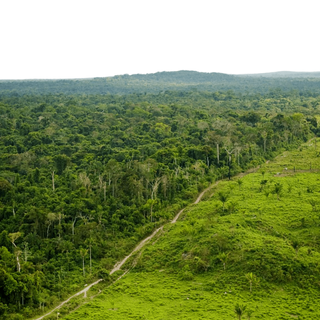The stratosphere, the second-highest layer in the Earth’s atmosphere, has contracted over the last 40 years due to growing carbon dioxide emissions, a new study has found.
Published in the Environmental Research Letters, the study observed that the stratosphere, which influences communication waves and satellite operations, has shrunk by more than 400 feet every decade since the 1980s. “This proves we are messing with the atmosphere up to 60 kilometers,” Juan Antonio Añel, an assistant professor of physics at the University of Vigo in Spain, who co-authored the study, told The Guardian.
The results were “shocking” and indicative of the effect of human activities on the “fragile balance of our planet,” Añel added.
Scientists have known for a while that global warming has caused the troposphere, located right below the stratosphere, to expand. But the recent finding show that carbon emissions, a result of industries and other human activities, have exactly the opposite effect on the stratosphere — causing it to cool down and shrink.
Experts had previously suspected the stratosphere may be shrinking, but they didn’t have conclusive proof. Moreover, the shrinkage was suspected to be a result of the depletion of the ozone layer, most of which is part of the stratosphere. But the present study has highlighted the role of greenhouse emissions hastening this process, illustrating the profound impact of humans on the Earth. In just two decades since 1990, the warming effect due to greenhouse gases has increased by 45%.
Related on The Swaddle:
Lebanon’s 2020 Explosion Was Violent Enough To Shake Earth’s Highest Layers, Scientists Say
The ozone layer is believed to be recovering now due to concerted efforts to bring its depletion under control, but, that won’t solve the thinning of the stratosphere. “This finding is significant because it means the shrinking effect will continue long after the ozone layer recovers,” Paul Williams, professor of atmospheric science at University of Reading in the U.K., who wasn’t involved in the study, told The Times.
The researchers warned that the stratospheric depletion could impact global communications and navigation systems — in addition to potentially having a cascading effect on the atmospheric layers above it. “If — and it is a big ‘if’ — the shrinking stratosphere were to lower all the atmospheric layers above it, low-altitude satellites would experience reduced air resistance, which could modify their trajectories,” Williams said.
Based on their analysis of climate change outcome, the authors have warned that the stratosphere could shrink by another 3,200 feet — in just another 60 years. And with global carbon emissions rebounding to pre‑Covid19 levels — because of industrial activity picking up — and the world slated to witness the second-largest rise in carbon emissions worldwide in history this year, it’s unlikely we’re anywhere close to solving the problem. In fact, “the stratospheric thickness has the potential to become a new indicator of climate change,” the study states.
“It is remarkable,” Williams notes, “that we are still discovering new aspects of climate change after decades of research… It makes me wonder what other changes our emissions are inflicting on the atmosphere that we haven’t discovered yet.”




